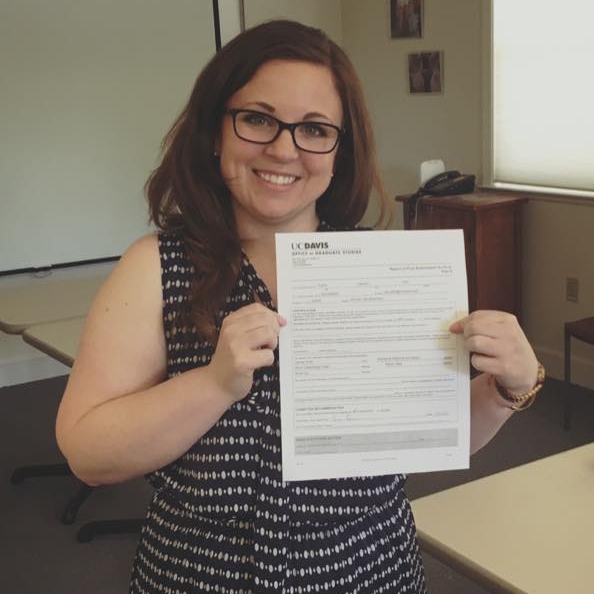Current Projects in the Peer Relations Lab
Day-to-Day Coping with Peer Victimization: Diversity of Friends, Bystanders, and Responses
PIs: Adrienne Nishina, Amy Bellmore (Wisconsin), and Melissa Witkow (Willamette)
NSF BCS-1147593
Much research on peer victimization (also known as “bullying”) points to the need to understand the phenomenon’s group nature within school settings. A large body of literature has clearly shown that students who experience peer victimization also exhibit a host of negative outcomes in the psychological, social, physical, and educational domains. Surprisingly, however, little research has been conducted regarding what students should do when they get picked on (i.e., what coping strategies work best). In addition, virtually no work has considered the extent to which the social context may be associated with whether a student chooses a given response and whether or not that response works. The purpose of this research is to identify key peer group contextual factors that can be targeted to ameliorate the psychological consequences of daily peer victimization. The study proposes inquiry into two specific areas: (a) Do social environments (e.g., friendship groups and the presence of bystanders) predict sixth- grade students’ coping responses? and (b) How do coping strategies and social environments interact to predict well-being in the face of daily peer victimization experiences? The planned study will utilize daily- report methodology over 2 weeks to assess the social contextual factors associated with peer victimization experiences, effective coping responses, and current well-being. Our ethnically diverse sample will consist of approximately 960 sixth-grade students from African American, Asian American, Latino, and Caucasian backgrounds within three communities in Wisconsin, California, and Oregon.
Daily experiences with diversity
PIs: Adrienne Nishina, Amy Bellmore (Wisconsin), Melissa Witkow (Oregon)
USDA National Institute of Food and Agriculture, HATCH project 1012239 (grades 8 and 9)
Recent nationally visible events reflecting interethnic conflict have renewed concerns about race relations in the United States. At the same time, many geographic areas are seeing increased ethnic diversity, particularly within youth populations. The purpose of the proposed study is to examine malleable factors that may allow schools and districts to parlay this ethnic diversity into positive academic outcomes for adolescents. Specifically, the study follows high school students longitudinally across grades 10-12 with 3 main aims, which are to (1) predict social-cognitive flexibility from ethnic diversity proximity (i.e., opportunities) and experiences (i.e., actual interactions) with peers from ethnically diverse backgrounds), (2) assess social-cognitive flexibility as a mediator in the association between diversity exposure and academic outcomes (grades, attendance), and (3) explore key factors -- ethnicity, prior diversity experiences in middle school, and interethnic school climate -- that may moderate these processes. The study relies on daily reports of group-level diversity exposure, a methodology expected to capture a reliable and valid assessment of students' actual social experiences on high school campuses.
Transitions to Adulthood
PIs: Adrienne Nishina, Jakeem Lewis
We hope to learn more about the continued developmental implications and consequences differential social status has on individual psychological well-being, and social and academic adjustment during the transition from adolescence to emerging adulthood in college. We are also interested in how exposure to diverse contexts in high school influences early social relationships and well-being during the transition to college. About 3000 students are part of this study at large public university.
Exploring the STEM Engagement of Minority and Women College Students
PIs: Alysha Ramirez Hall, Adrienne Nishina
NSF 1606872
In the United States, women and ethnic minorities are obtaining far fewer bachelor’s degrees in science, technology, engineering, and math (STEM) areas of study than white men. This is despite the fact that women make up slightly more than half of the US population and ethnic minority groups are increasing their representation in the US, including in undergraduate institutions. The proposed study will offer critical insights to share with the university community on ways to increase the numbers of underrepresented groups in STEM as well as ways to retain them. In the proposed study, 300 college freshmen majoring in a STEM field will be recruited (projected ethnic breakdown based on oversampling are 25% Caucasian, 20% Black, 25% Hispanic, and 30% Asian descent; 60% female) from a larger study of 1800 college freshmen in order to: 1) explore the daily associations between stereotype threat experiences and STEM satisfaction and whether this association strengthens over time; 2) evaluate self-efficacy for STEM field success as a mediator of the association between daily stereotype threats and daily STEM satisfaction; and 3) examine the potential protective role of diversity exposure on continuation in STEM-related fields. To address these aims, the study will use a longitudinal framework (four time points across 2 years) with 5-day daily report periods embedded within 3 of those time points.



